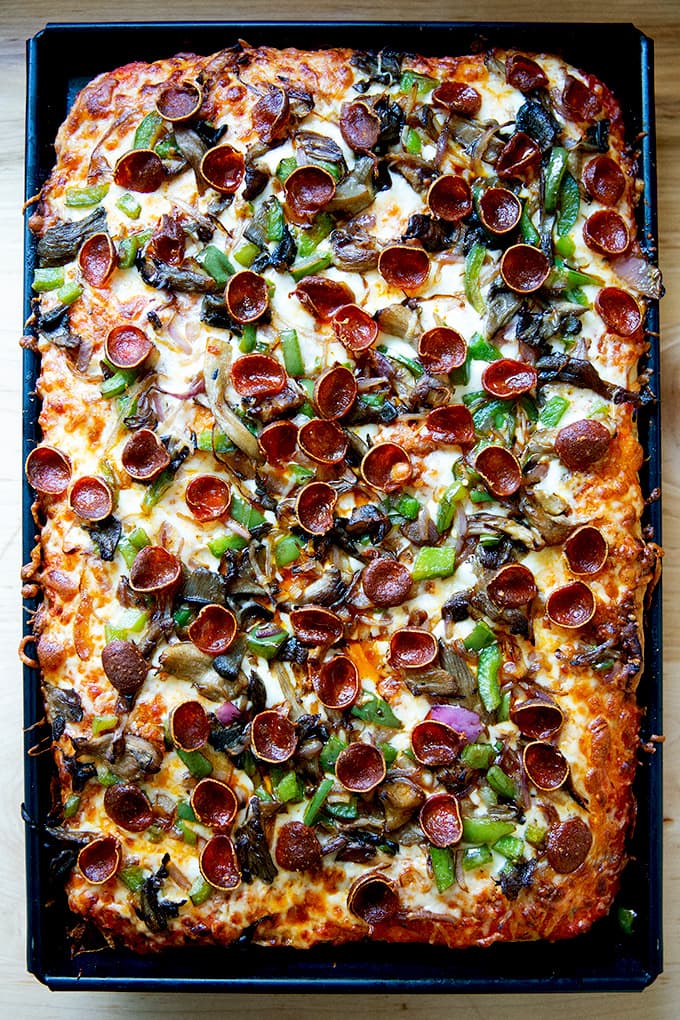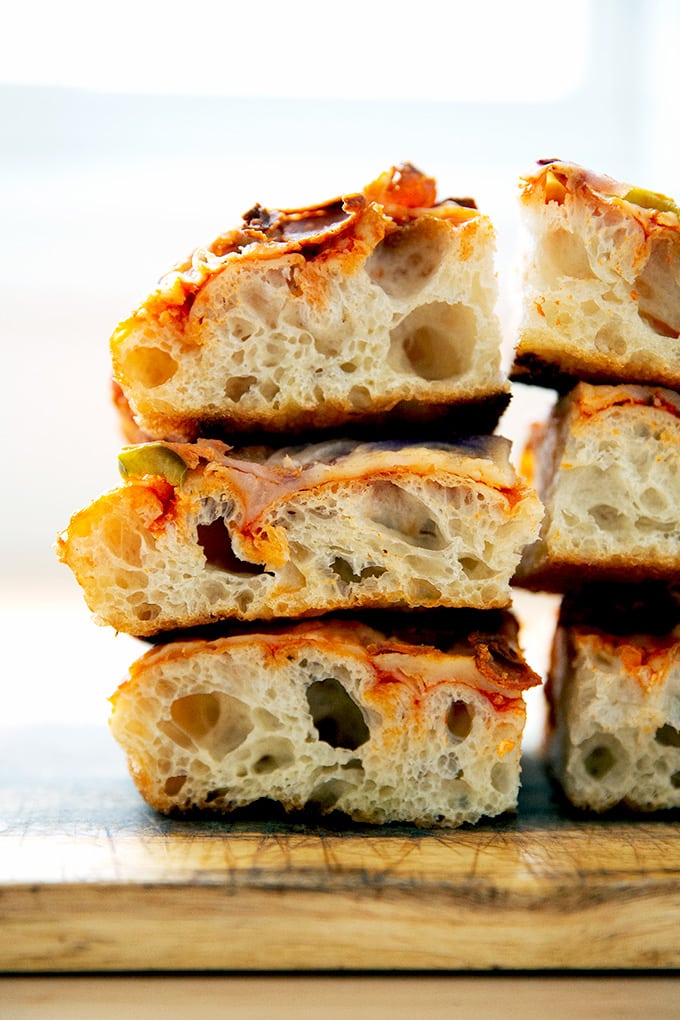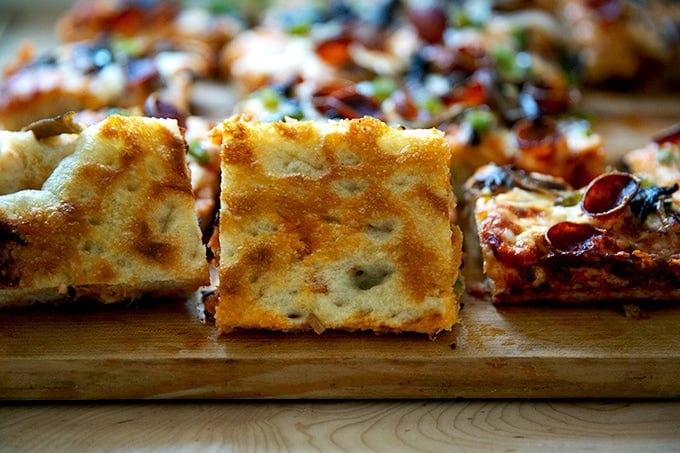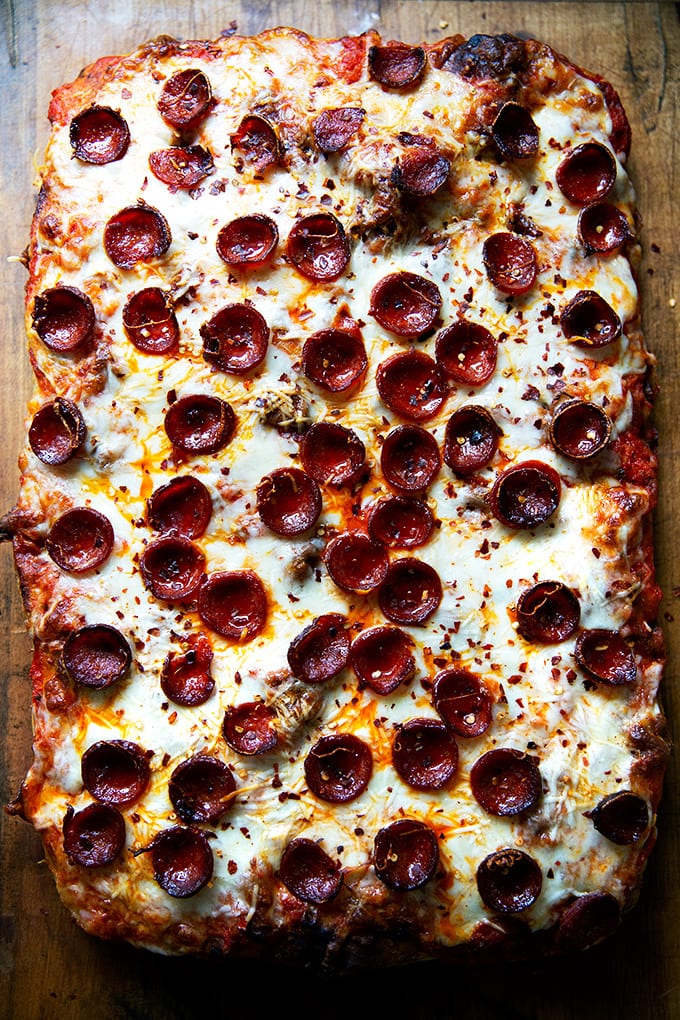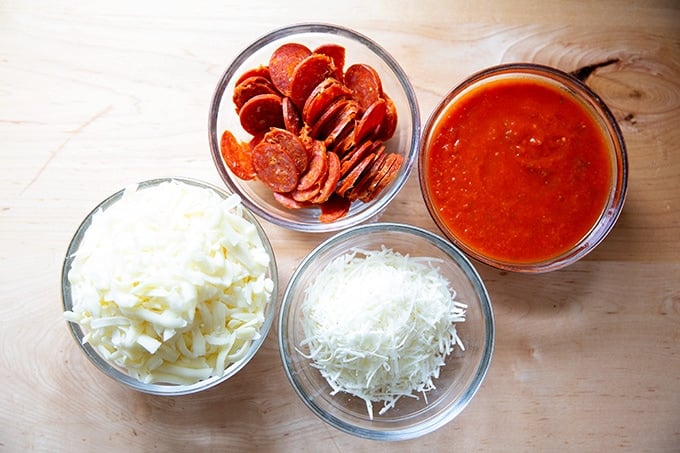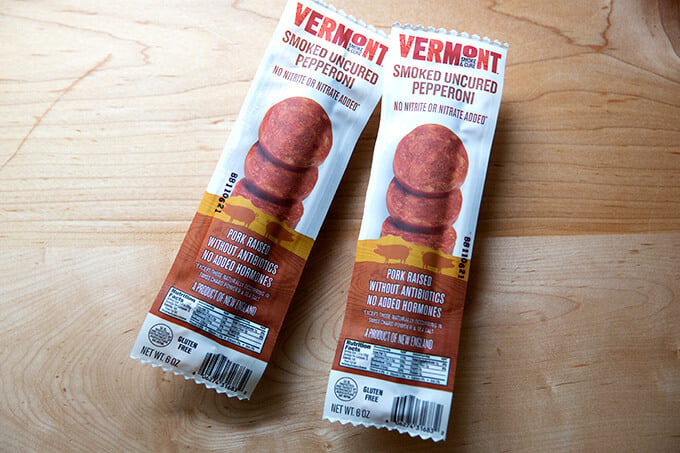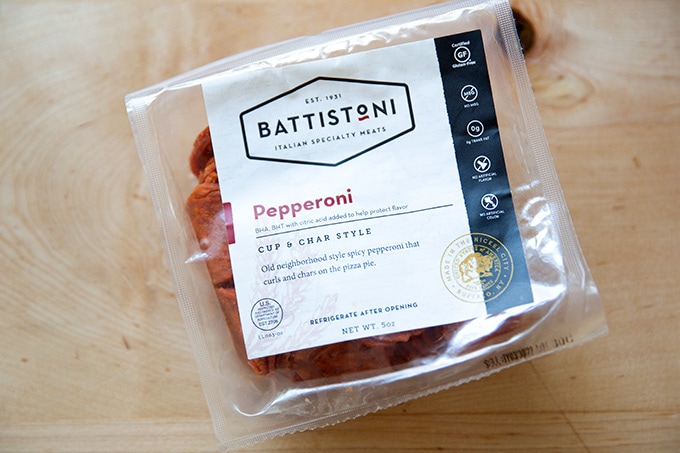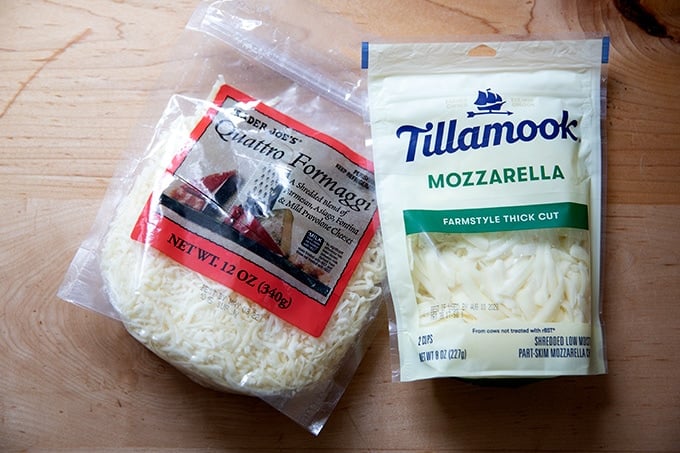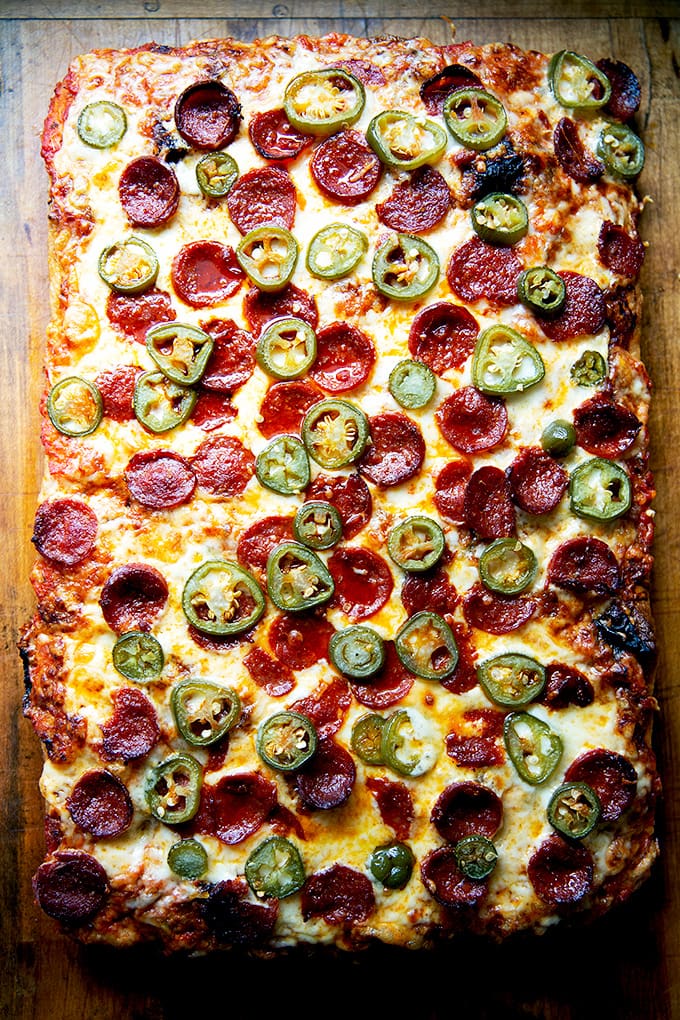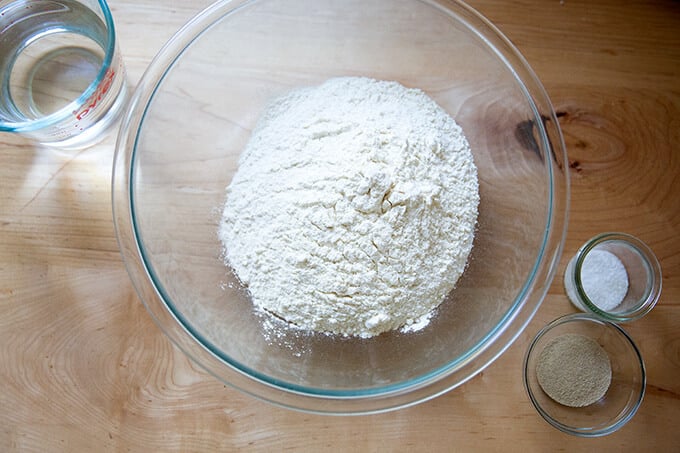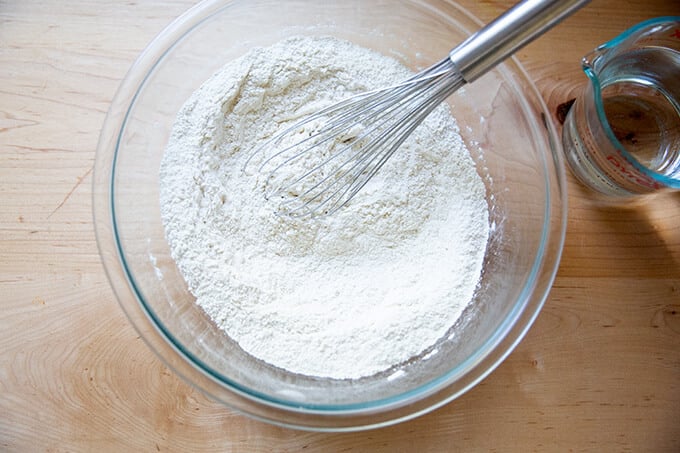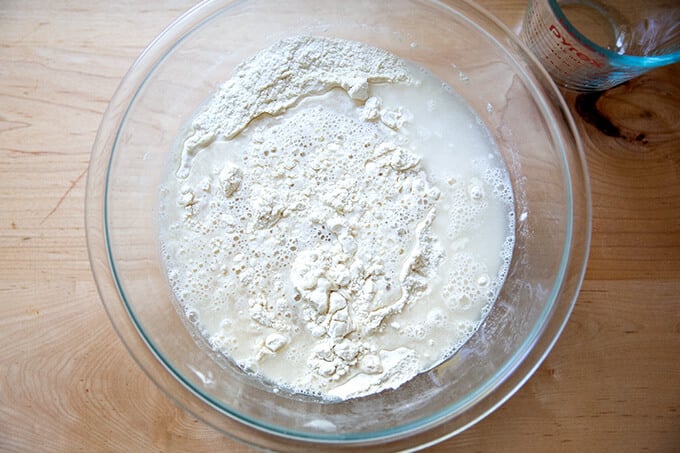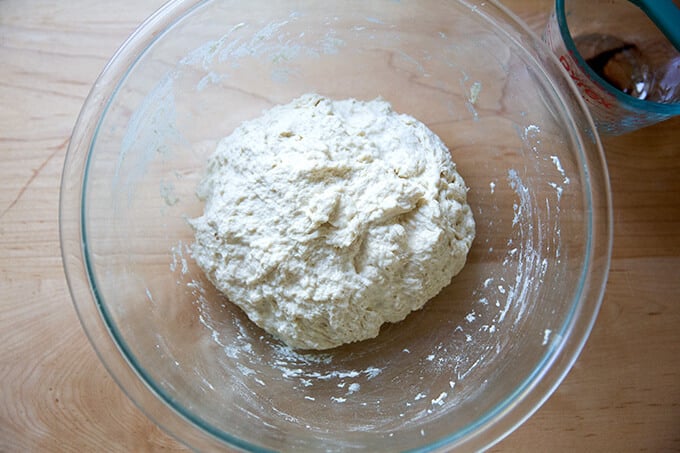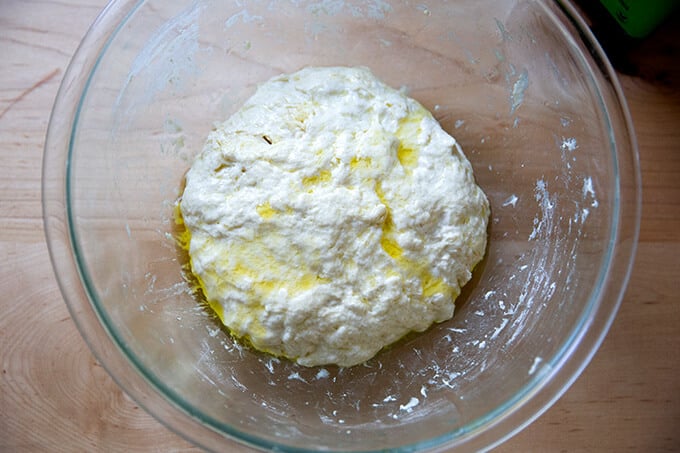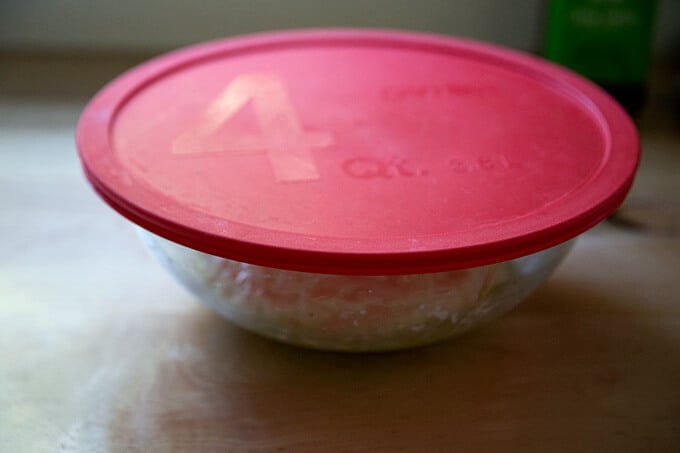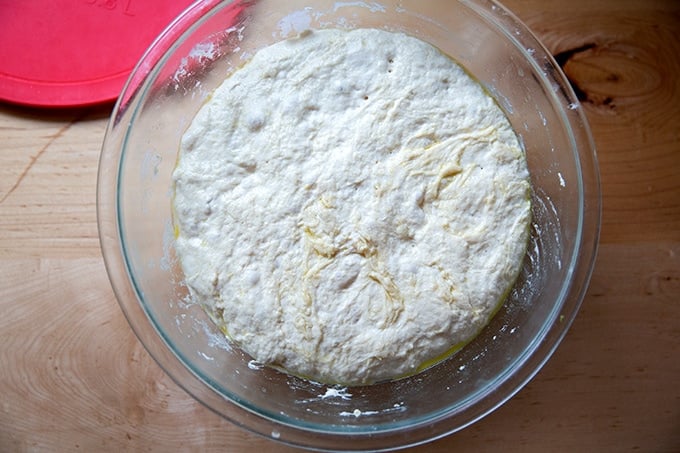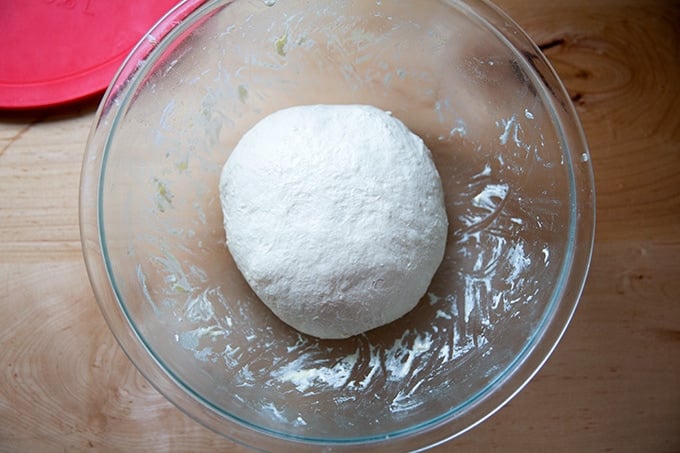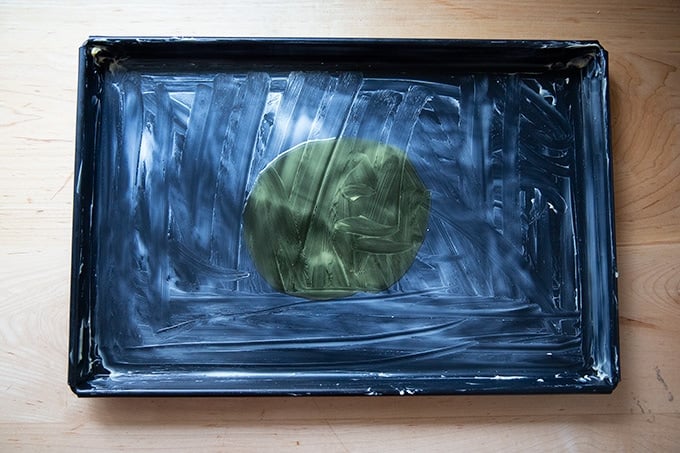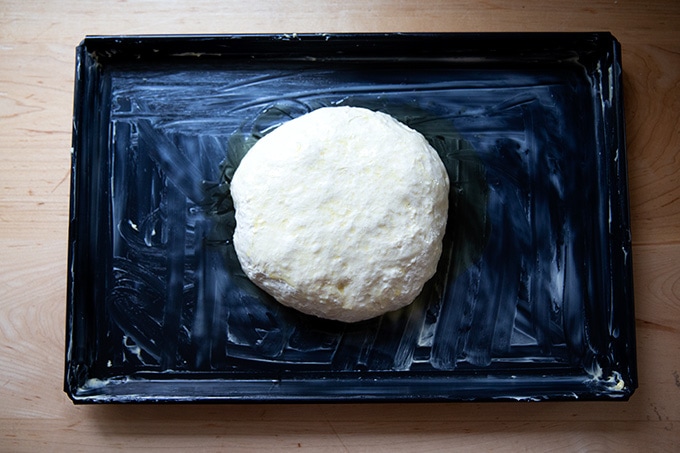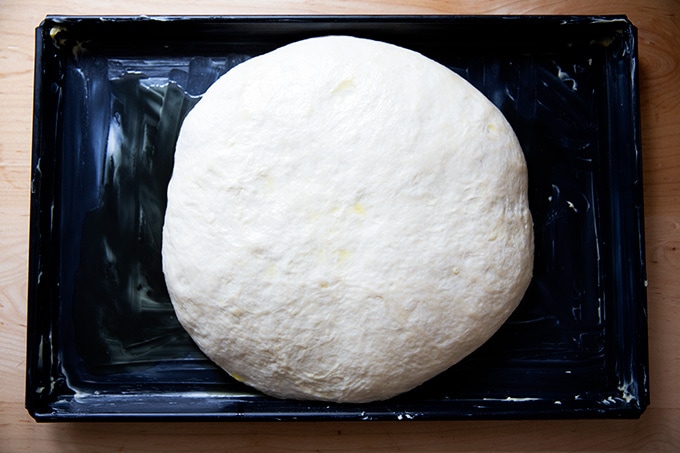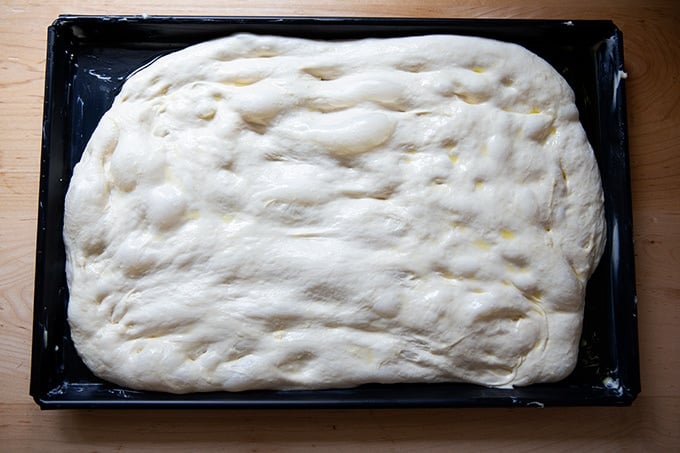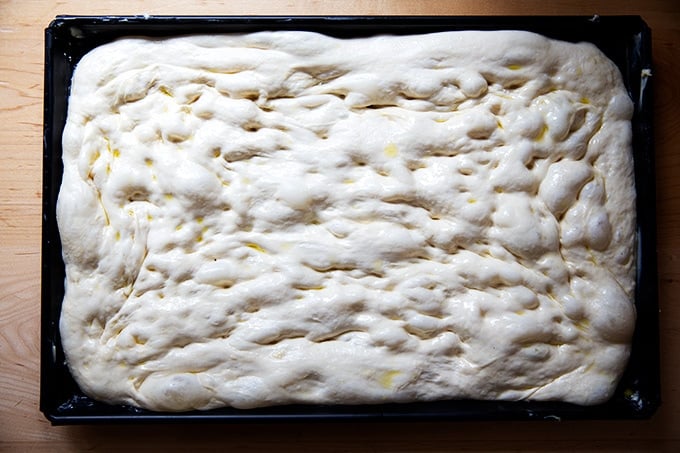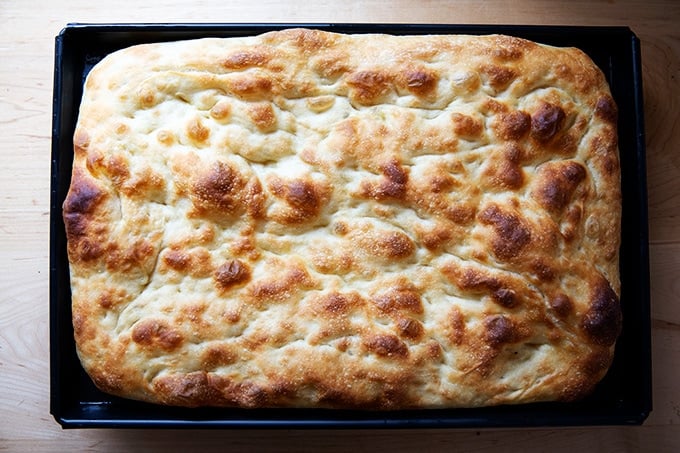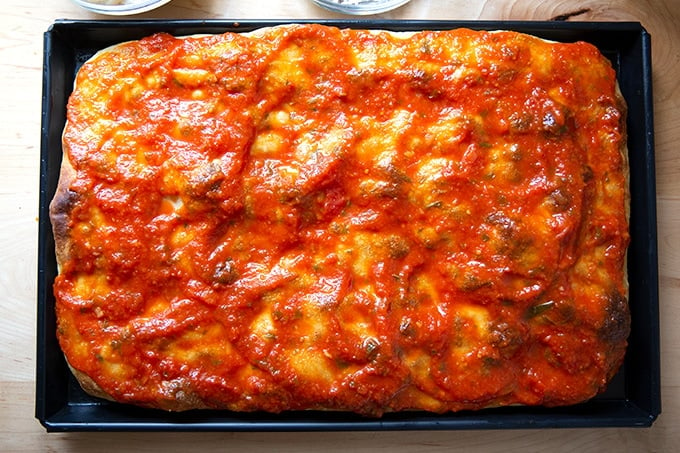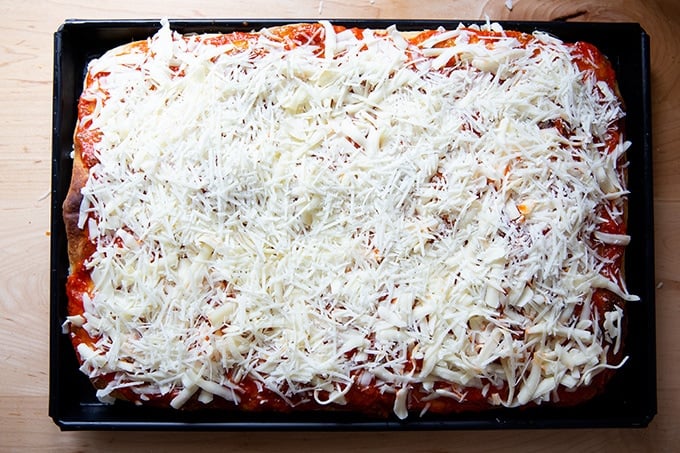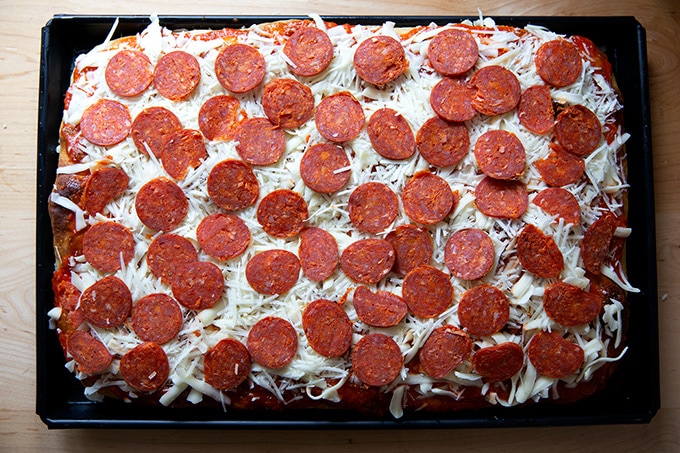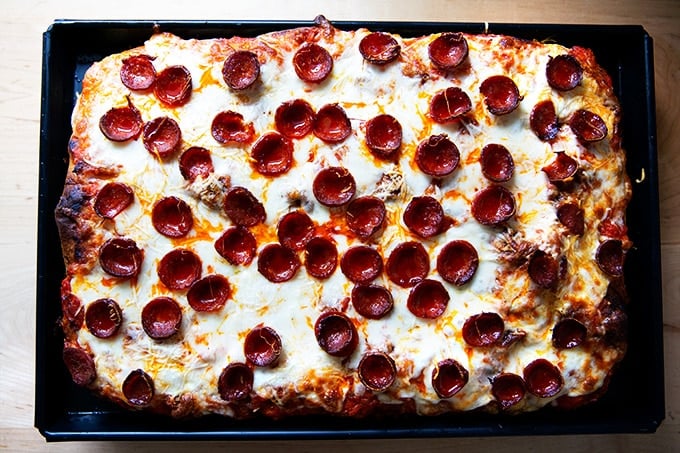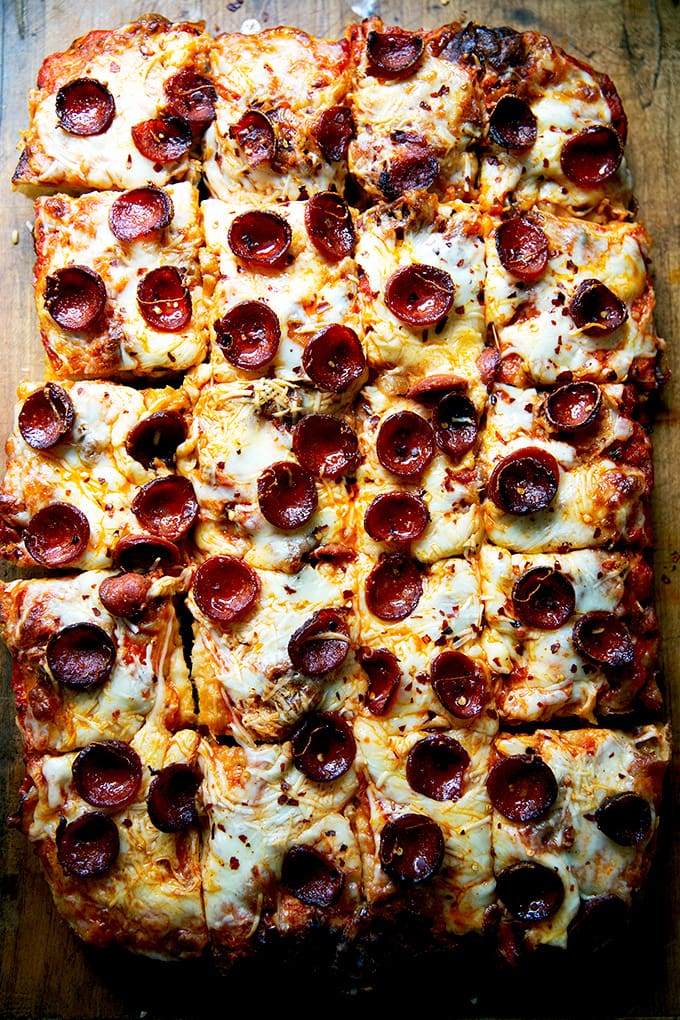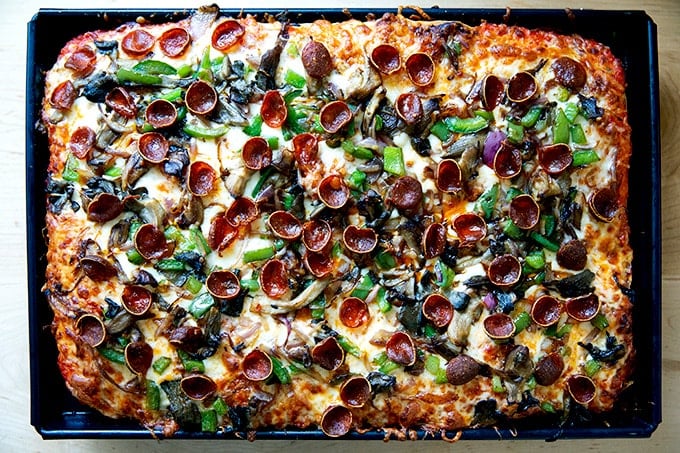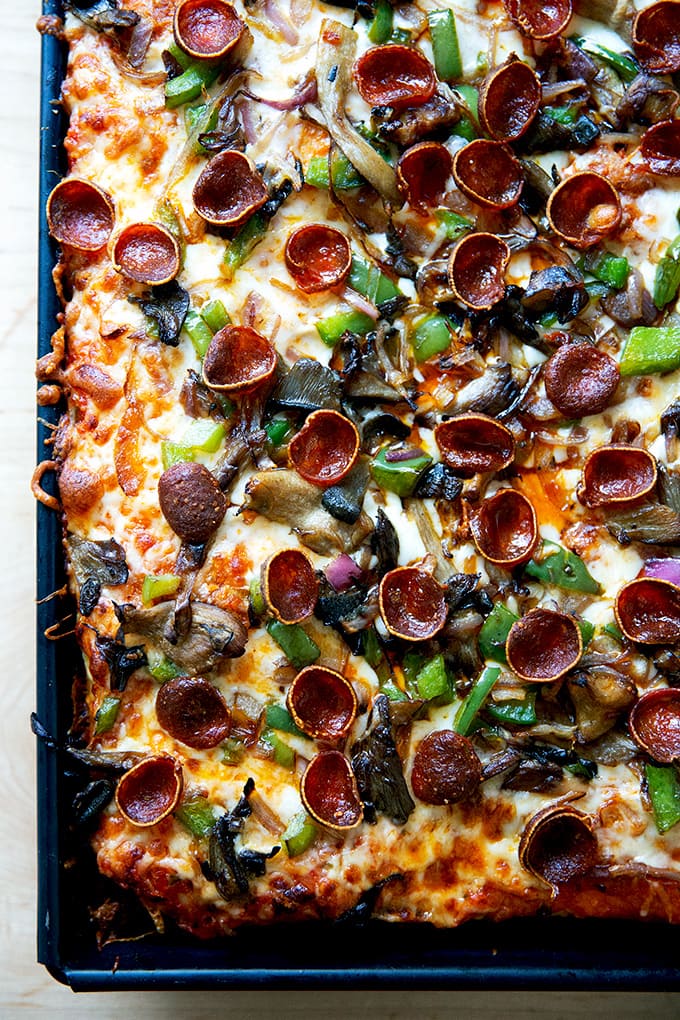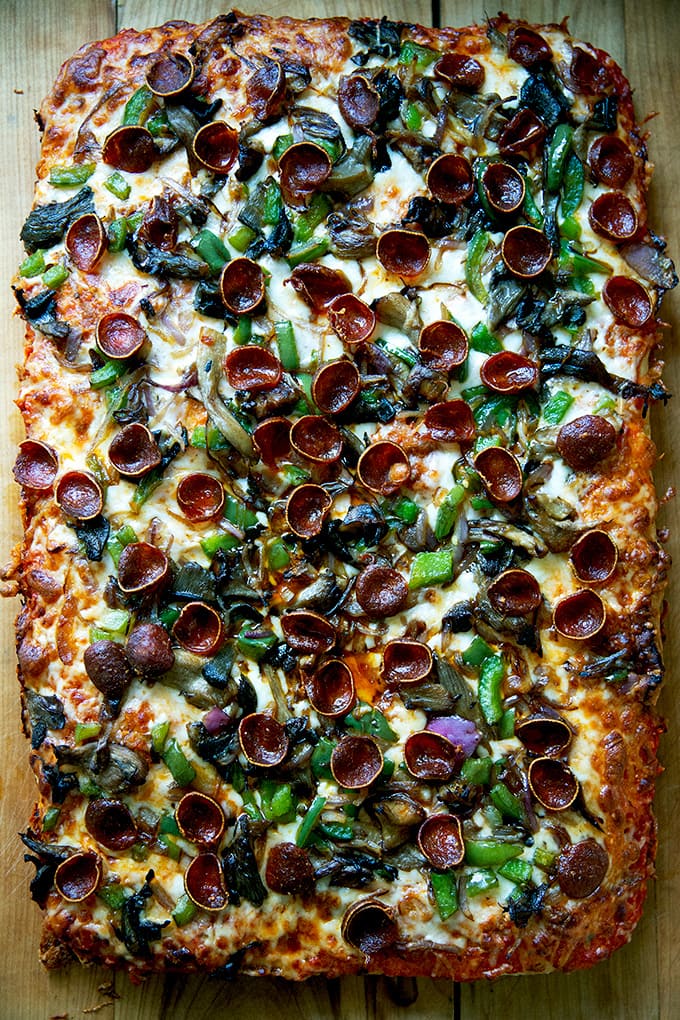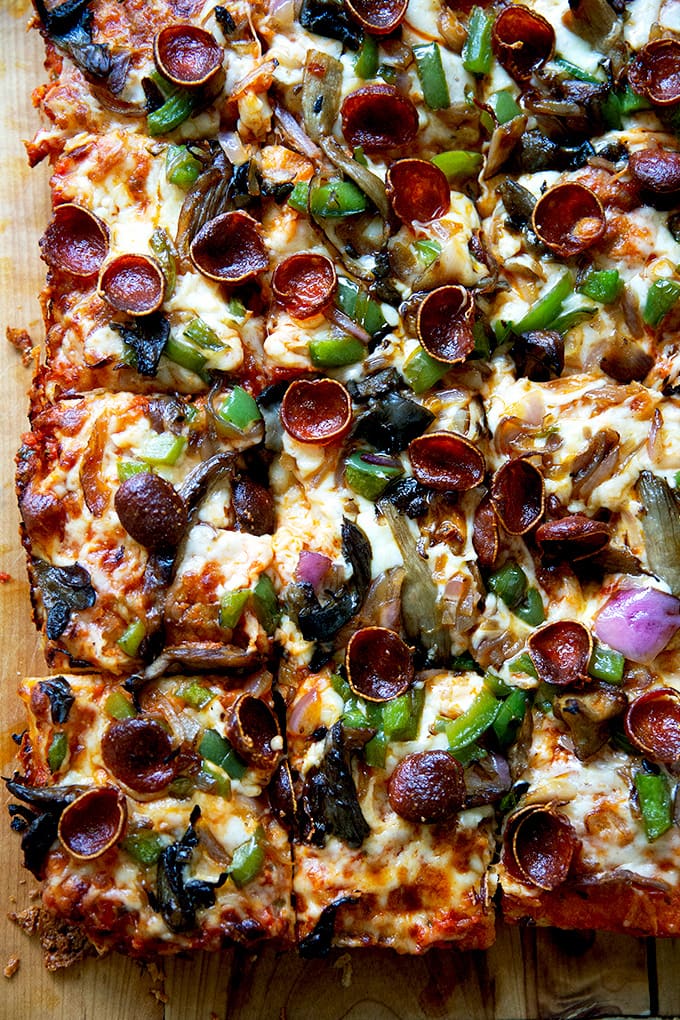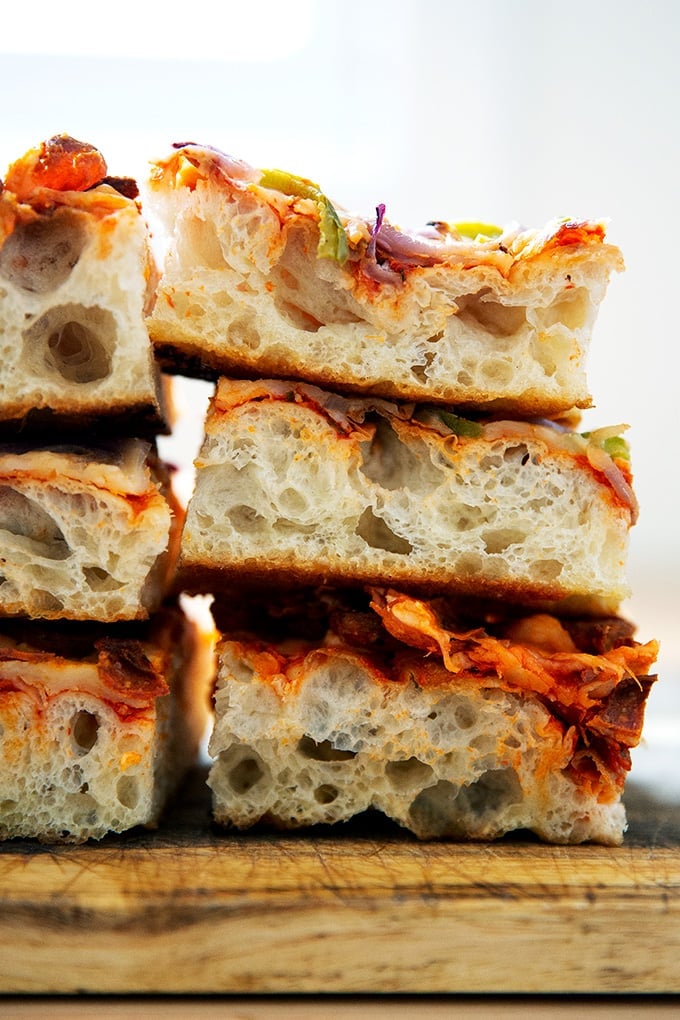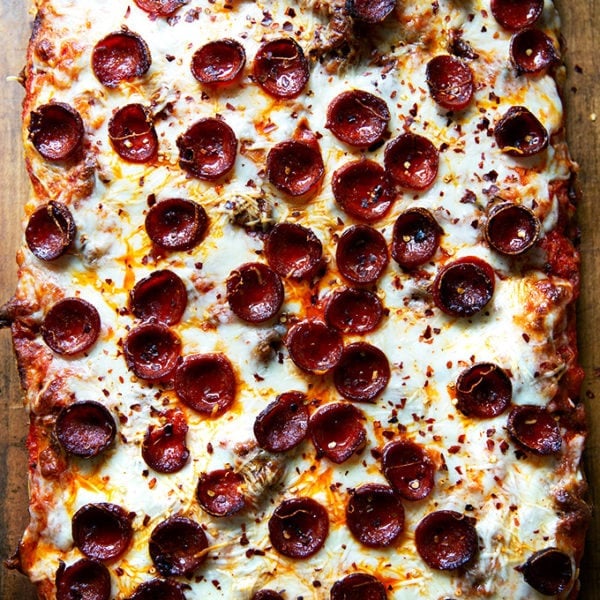Ever since posting this Detroit-style pizza recipe last summer, I’ve longed to make a really good Sicilian-style pizza. If you are unfamiliar, Sicilian-style pizza is similar to Detroit-style with its focaccia-like crust, but it’s baked on a sheet pan. It’s also not quite as fussy as Detroit-style, its assembly not governed by quite so many rules. To refresh, with Detroit-style pizza, cheese goes on the dough first, it’s spread all the way to the edges in order to create a frico crust, the dough is proofed overnight with the cheese embedded into it, the sauce is distributed in three racing stripes, it’s baked in a rectangular blue steel pan. With Sicilian-style pizza, the criteria to classify it as such is simpler: focaccia crust, topped like a pizza, baked on a sheet pan. And so I started my experiments by simply topping my favorite focaccia dough recipe with sauce and cheese and baking the ensemble at high heat on a standard sheet pan. Much to my disappointment the high-hydration crust couldn’t handle the weight of the toppings. The slices, as a result, slumped under the sauce and cheese, and they tasted soggy and doughy. To compensate, I tried baking it longer, which helped, but which resulted in overcooked cheese and toppings. From there, I experimented with dough recipes from other sources, and while the bottom crust of the pizza indeed better withstood the heft of the toppings, I didn’t like the texture, which lacked any resemblance to a light, airy focaccia. And the cheese, as with my previous experiments, was similarly overcooked. I had nearly given up when in a final effort to gain insight, I bought Peter Reinhart’s Perfect Pan Pizza and found a promising note: “The Sicilian-style pizza is the only one in this book whose crust is partially baked in advance. Once the crust is baked, it becomes very stable and won’t buckle under the weight of sauce and toppings.” Interesting, I thought, though I wasn’t completely optimistic because I had attempted a parbake at some point (for a different experiment), and I didn’t get great results: my dough had puffed way up, doming in the center, making it difficult to spread sauce and toppings over the surface. But I read on and found a detail that gave me real hope. Just before parbaking his dough, Peter dimples one more time “through the middle — but not at the perimeter — of the pizza.” And Friends! Guess what? It worked! By dimpling only throughout the center of the dough, the focaccia base baked mostly evenly, making it easy to spread toppings and cheese over the top. And the finished crust, even under the weight of sauce, cheese, and a heap of sautéed vegetables and pepperoni, baked up light and airy, just like focaccia. I am so excited about this recipe. The parbake is game-changing! You can do it up to 24 hours in advance, which is convenient for meal prepping. If you have made this overnight, refrigerator focaccia recipe, this Sicilian-style pizza will be a total breeze. And if you’d prefer to make a sourdough base, use this sourdough focaccia recipe through step 5. Read on to learn more about Sicilian-style pizza and the keys to having success with it as well as for various topping inspiration and step-by-step instructions.
What is Sicilian Pizza and How it Differs from Grandma Pie
While the definition of Sicilian-style pizza as we know it today is debatable, the indisputable original Sicilian pizza is something called sfincione, a focaccia-like dough topped with onions, bread crumbs, and caciocavallo cheese. It’s traditionally served on New Year’s Eve. If you go to a Sicilian-style pizzeria today, you’ll find slices that resemble sfincione with their focaccia-like foundation but the toppings will vary as much as they would in any slice shop. According to Peter Reinhart’s Perfect Pan Pizza, Sicilian-style pizza is actually an American invention, originating in communities like New York City’s Brooklyn and Queens. Before researching Sicilian-style pizza, I thought the category was synonymous with “Grandma” pie. I have since learned, there’s a (fuzzy) distinction. For some, a grandma pie is one that is baked once, whereas a Sicilian-style pizza is baked twice: once without any toppings (or partially topped) and then again with more toppings. For others, it’s the opposite. And for others still, it’s the height of the slice and the length of the fermentation that matter. The common thread, it seems, is that the crust should closely resemble focaccia.
5 Tips for Sicilian-Style Pizza
Making great Sicilian-style pizza is a real balancing act. As noted above, the parbake was the piece of the puzzle that allowed everything to work for me, giving the unencumbered high-hydration dough time to stabilize while ensuring the toppings that would eventually blanket it did not overcook. But there are a few more keys to making good Sicilian pizza every time. In sum:
Toppings
With Sicilian-style pizza as with Detroit-style, you can use a heavier hand than you would with a more Neapolitan-style pizza. For each Sicilian-style pizza I make, this is what I like:
12 ounces of cheese — whole milk, low-moisture mozzarella or a combination of mozzarella and Cheddar or Monterey Jack or Pecorino (or, if I’m being honest, the Trader Joe’s 12 oz bag of grated Quattro Formaggi) 1 heaping cup of tomato sauce
For additional toppings, here are a few favorite combinations:
6 ounces of pepperoni + crushed red pepper flakes (out of the oven) Sautéed vegetables (mushrooms, onions, and peppers), recipe below pepperoni + sautéed vegetables pickled jalapeños + pepperoni + hot honey, inspired by “The Colony” from Emmy Squared in Brooklyn
Note: Some Sicilian-style pizza recipes call for the “upside-down” assembly method where the cheese goes on before the sauce. This technique helps prevent the dough from getting soggy because the cheese acts as a barrier between the dough and sauce. I don’t find this to be necessary when a parbake is employed, but it’s something to keep in mind for your own experiments. This is my favorite pepperoni from Vermont Smoke & Cure: This pepperoni is great, too, and it’s already sliced, which is convenient: If you’re up for it, it’s best to grate whatever cheese you are using yourself as opposed to buying pre-grated cheese. That said, grating cheese is a serious tricep workout, and if you’re not up for it, there are some good grated cheeses out there. As noted above, I love Trader Joe’s Quattro Formaggi — it’s so flavorful and it melts nicely. I also recently discovered this larger-shred Tillamook Mozzarella, and I really like how it tastes and melts as well. Hannaford’s sells it.
How to make Sicilian Pizza, Step by Step
Gather your ingredients: 4 cups (512 g) all-purpose or bread flour, 2 teaspoons (12 g) salt, 2 teaspoons (8 g) instant yeast (SAF is my preference), 2 cups lukewarm (454 g) water: Whisk together the flour, salt, and yeast first: Add the water: Use a spatula to stir the two together. Slick the dough with olive oil: Then cover the bowl (with a lid or plastic wrap or something to make it airtight). Stick the bowl in the fridge immediately; leave it there to rise for 18 hours or longer—two to three days will give you an even lighter crust. Uncover the bowl, then… … deflate the dough. Using oiled hands grab a portion of the dough and stretch it up and toward the center. Turn the bowl slightly and repeat until you have created a rough ball. Prepare your pan for baking with both butter and olive oil. I’m using this 12″ x 18″ Winco Sicilian Pizza Pan. (See recipe notes if you would like to use the Lloyd Sicilian-Style Pizza Pan (slightly smaller than the Winco pan) or the Lloyd Detroit-Style Pizza Pan.) Transfer your dough ball to the pool of olive oil and turn it to coat. Let sit for 2.5 to 3 hours or until it has poofed considerably. Dimple and stretch the dough to fit the pan. As soon as the dough resists, stop and let it rest for another 30 minutes. Then stretch it again to fit the pan. At this point, the dough can hang out in the pan for several hours. Cover it with plastic wrap to ensure the dough does not dry out if you plan on doing so. Dimple one last time throughout the center of the dough before transferring it to the oven to parbake it. Parbake the dough for 11-12 minutes at 500ºF on a preheated Baking steel or pizza stone. Then, top as you wish. I’m using my go-to homemade tomato sauce here. Top with cheese: Then add pepperoni or sautéed vegetables or sausage or whatever you wish: Transfer to the oven for another 10 minutes. Remove from oven and let rest in the pan for another 5 minutes before transferring the pizza to a board to rest. Shower with pepper flakes, if you wish. Cut into squares and serve. Here’s the sautéed vegetable + pepperoni one:
5 from 38 reviews The base of this recipe is this overnight, refrigerator focaccia dough. If would like to make a sourdough version, follow the recipe for this simple sourdough focaccia bread recipe through step 5; then proceed with the recipe.
Notes:
4 cups (512 g) all-purpose flour or bread flour, see notes above 2 teaspoons (12 g) kosher salt 2 teaspoons (8 g) instant yeast, see notes above if using active dry 2 cups (455 g) lukewarm water, made by combining 1/2 cup boiling water with 1 1/2 cups cold water olive oil
For the pizza:
butter 2 tablespoons olive oil 12 ounces of grated cheese, such as whole milk mozzarella or a mix of Monterey Jack, Cheddar, and Mozzarella, see notes above 1 cup (+ a few spoonfuls) tomato sauce, such as this one or this one, or your favorite jarred sauce
For a veggie pizza:
3 tablespoons olive oil, divided 8 ounces mushrooms, sliced 1 green (or other) bell pepper, diced 1/2 red onion, thinly sliced
For a pepperoni pizza:
6 ounces pepperoni, I love Vermont Smoke & Cure, sliced as thinly as possible — if you want the pizza to be really loaded with pepperoni, you’ll need more like 12 ounces crushed red pepper flakes
For a pickled jalapeño & pepperoni pizza:
1 cup pickled jalapeños 6 ounces pepperoni, thinly sliced hot honey, optional
Prepare the pan for baking: Prepare the pizza for baking: Bake and Top the Pizza:
Note: My calculations lead me to think that a Detroit-style pan needs about 532 grams of dough. So another way to do it would be to make the recipe as written, use 532 grams of it for the Detroit-Style pan and use the remainder for something else — pizza, mini rolls, etc.
